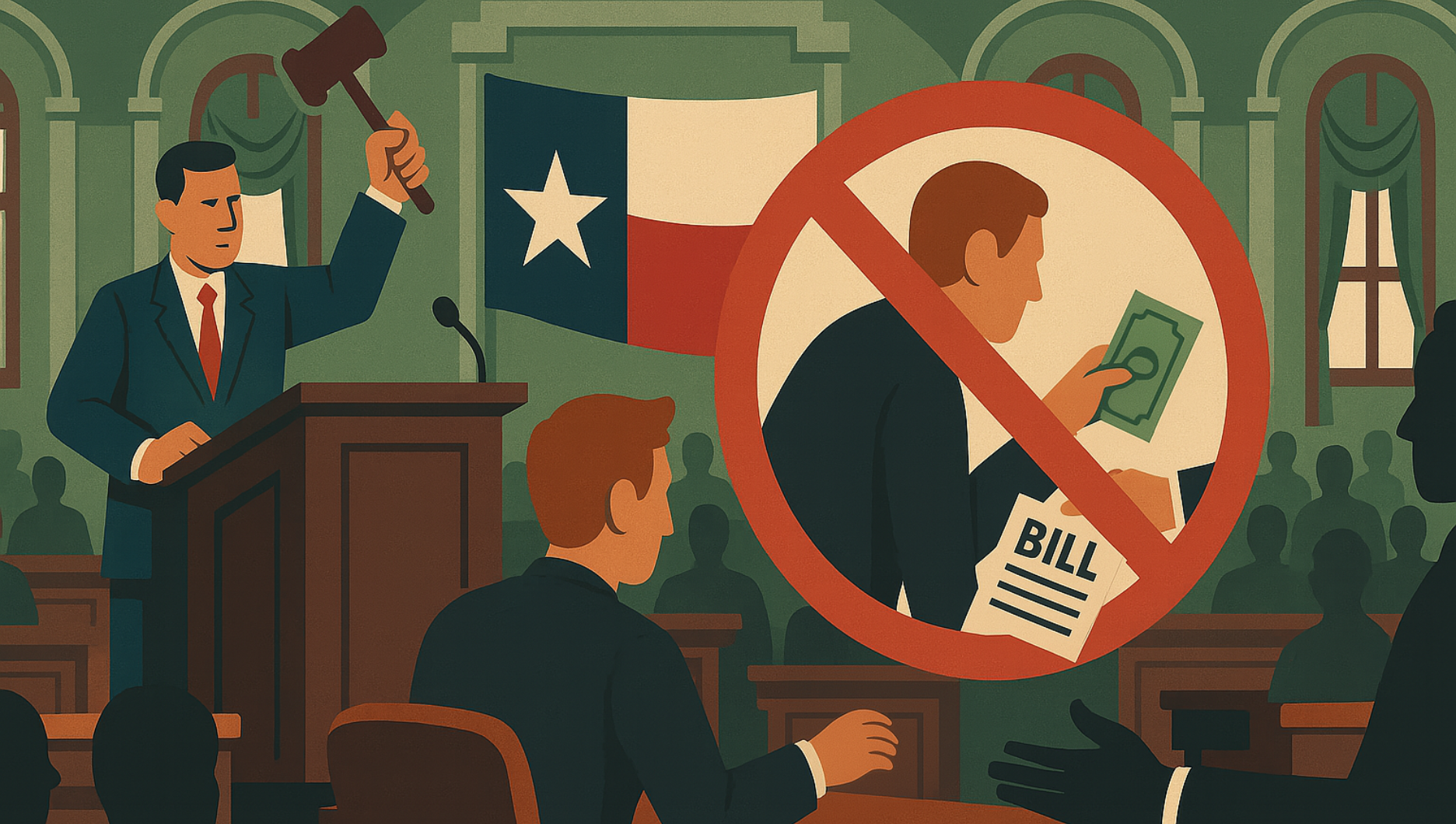When the Texas House and Texas Senate vote on whether to approve the final versions of House Bill 500 and Senate Bill 1, Figure 1 shows that they will be voting on whether to approve more than $53 billion in new spending of state funds.
| Figure 1: New State Funds Spending in the Texas Budget | |
| House Bill 500 | $19,479,992,091 |
| Senate Bill 1 | $33,568,094,261 |
| Total | $53,048,086,352 |
There are two major appropriations bills in each legislative session. One of them is known as the supplemental appropriations bill. In this session, the supplemental bill is HB 500. Traditionally, the supplemental bill is supposed to make up for any funding shortfalls in the current two-year fiscal biennium.
However, the Texas Legislature has filled HB 500 with new spending for the upcoming 2026-27 biennium, spending that should be appropriated in SB 1. Because most people ignore the supplemental bill, and they can increase spending limits under the Tax Spending Limit, the Legislature is trying to sneak more than $19 billion of new spending past Texans who would rather have the $19 billion go towards property tax relief.
| Figure 2: New State Funds Spending in HB 500 | |
| Health and Human Services | $2,833,851,519 |
| Texas Water Fund | $2,500,000,000 |
| Higher Education | $1,994,522,800 |
| Government Facilities and Technology | $1,656,879,556 |
| Various State Agencies | $1,542,114,768 |
| Criminal Justice | $1,338,848,703 |
| Texas Education Agency | $1,323,839,579 |
| Employee Retirement System | $1,000,000,000 |
| Texas Department of Transportation | $833,000,000 |
| Nuclear Energy Fund | $750,000,000 |
| Re-appropriation of Unexpended Funds | $3,706,935,166 |
| Total | $19,479,992,091 |
The Legislature also uses budget gimmicks and other tricks to hide new spending in SB 1. The Texas Legislative Budget Board’s (LBB) summary of the House version of SB 1 shows that overall state spending is increasing by $4.4 billion, or 1.3%, over the previous biennium. However, by shifting spending between federal and state funds, using the supplemental appropriations to increase the spending base, and various other budget stunts, Figure 3 shows that the LBB—and our elected officials—are hiding more than $33 billion in new spending of state funds in SB 1.
| Figure 3: New State Funds Spending in SB 1 over 2023 Appropriations | |
| K-12 Education | $11,137,900,000 |
| Texas Energy Fund | $5,000,000,000 |
| TDCJ COVID-19 Offset | $4,079,169,050 |
| TxDOT | $3,347,362,231 |
| Dementia Institute | $3,000,000,000 |
| Medicaid | $2,425,800,000 |
| Texas Department of Criminal Justice Operations | $1,282,600,000 |
| State Employee Retirement, Health Benefits, etc. | $939,200,000 |
| Higher Education Formula Funding | $700,000,000 |
| Teacher Retirement & Health Benefits | $607,000,000 |
| Film Incentives | $500,000,000 |
| Biennialize State Employee Salary Increase | $384,800,000 |
| Dept. of Family and Protective Services | $134,015,259 |
| Texas Legislature | $30,247,721 |
| Total | $33,568,094,261 |
Even though the Texas Legislature plans to spend $53 billion in state funds over the next two years, only $6 billion of that will go to taxpayers in the form of property tax relief. The other $47 billion will go to constituents whom legislators value more than taxpayers. Texans deserve better.
Texans for Fiscal Responsibility relies on the support of private donors across the Lone Star State in order to promote fiscal responsibility and pro-taxpayer government in Texas. Please consider supporting our efforts! Thank you!
Get The Fiscal Note, our free weekly roll-up on all the current events that could impact your wallet. Subscribe today!




